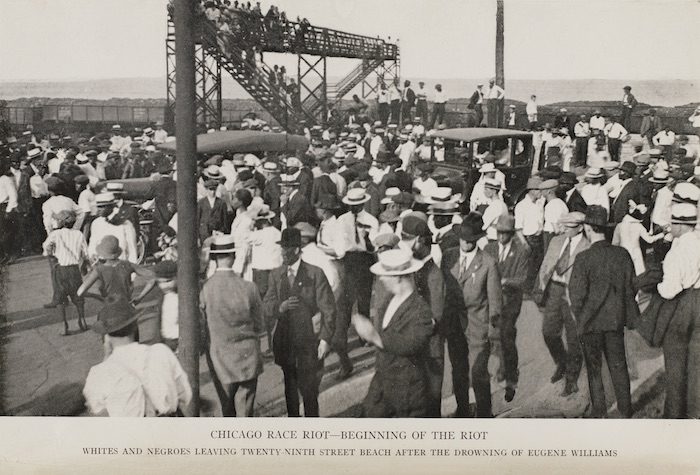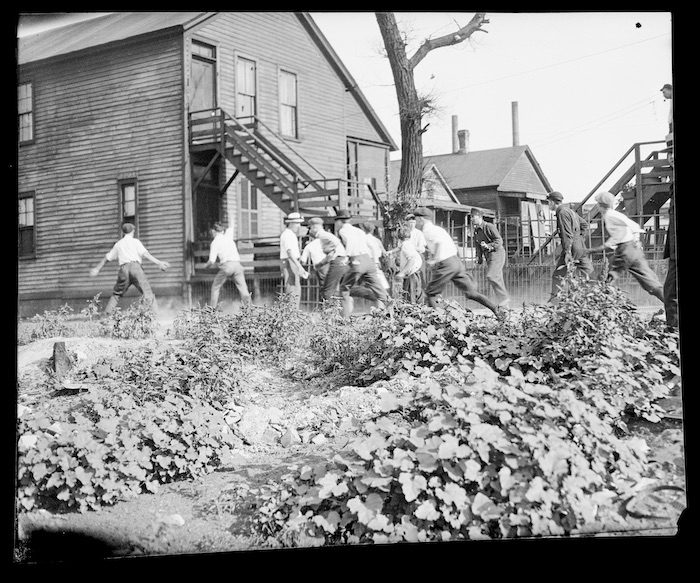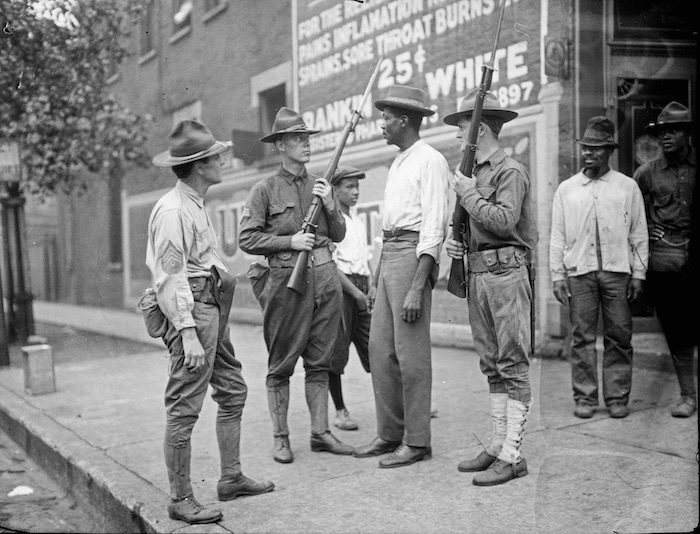One hundred and one years ago today, the Chicago Race Riot began with the murder of Eugene Williams and the failure of law enforcement to hold those responsible for his death accountable. On Sunday, July 27, 1919, thousands of Chicagoans sought relief from the brutal heat on the shores of Lake Michigan. Among them was Williams, a seventeen-year-old African American who was on a raft with some friends. They inadvertently drifted across an invisible line that divided the waters by race a few yards out from a “white” beach at 29th Street. Beachgoers witnessed George Stauber, a twenty-four-year-old white man, hurl stones at the boys until Williams fell off the raft and drowned. The first police officer at the scene, Daniel Callahan, refused to take Stauber into custody.

A large crowd of people assembled at the 29th Street beach after Eugene Williams’s death, Chicago, July 27, 1919. CHM, ICHi-030315
As word spread of Williams’s death, a large crowd gathered at the beach and the scene became tense. Soon, the racial powder keg that was Chicago exploded into a race riot that began on July 27 and ended on August 3, 1919. The eight-day riot was one of many racial conflicts throughout the United States that were a part of what became the Red Summer of 1919, when violence was used by whites to reassert racial dominance over African Americans.
Learn more about the event through Chicago 1919: Confronting the Race Riots, a year-long project coordinated by the Newberry Library in partnership with the Chicago History Museum and twelve other Chicago institutions. Explore Chicago 1919.

Victim being stoned and bludgeoned under corner of house during the 1919 Chicago Race Riot. CHM, ICHi-065493; Jun Fujita, photographer

Armed National Guard and African American men stand on a sidewalk during the race riot in Chicago, 1919. CHM, ICHi-065478; Jun Fujita, photographer
On PBS’s The Future of America’s Past, award-winning historian Ed Ayers travels to places that define misunderstood parts of America’s past. In his “Red Chicago” episode, Ayers visits Chicago during the centennial of the “Red Summer,” when long-simmering tensions between white and Black residents in the city erupted in violence. Join him as he talks with a poet, a performance artist, as well as the Chicago History Museum’s public and community engagement manager, Erica Griffin. Watch the episode.
The Chicago Stories Initiative
Our fellow Chicago community organization, the Lookingglass Theatre, will feature COVID-considerate events/expressions that plumb the depth of Chicago’s history and people, while inventing new Chicago traditions to carry us forward together. The first production of this series is Sunset 1919, which commemorates the start of the 1919 Chicago Race Riot by creating art to honor the fallen. This spoken-word piece is meant to peacefully honor the lives of Black humans impacted by the deadly racial attacks that swept the nation that summer, the roots of which stretch back across centuries, and the fruits of which we continue to pluck—a moment in an unbroken line. See the film.